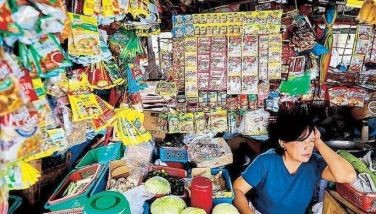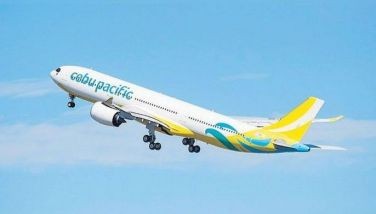How college textbooks became affordable (A memoir)

There was a time when college textbooks were very expensive. Today, college textbooks are more affordable and available for the country’s youth and teachers.
“The collegiate level textbooks market today.†The current state of affairs just described did not come about naturally. It was paved by a law that made possible the printing of books in the country.
Prior, the textbook market was thin. High price limited supply. Moreover, the control of the market by the foreign distributors meant that if the market was thin, there was little incentive to supply books to the country.
Today, many local printers undertake the printing of textbook titles and the publishers with original copyright ownerships receive their due share of royalties. But these royalties are bilaterally negotiated between publishers and printers. The force of national need has created a tilt in favor of the printing of the books at inexpensive prices.
“When textbooks were very expensive and scarce.†The state of textbook affairs was what I had known as a university student and later, as instructor in Economics. My contemporaries in the field as well as trains of immediate generations that followed us were in the same boat. Part of the story was the exchange and import control policy of those times. Another major factor was the control of the market for textbooks by the foreign publishers.
In the classrooms, that situation led to a condition in which many college courses did not have prescribed textbooks that were within wide reach of students. Most learners relied on the professor’s lectures. The more hardworking among them waited for their turn to borrow from the reserve sections of the library in order to read the books.
Learning from the books was thus a heavily and unnecessarily burdened activity. Waiting time to read in the library was long for many. Few students could afford to buy their own books. The learning process was more difficult just from the scarcity of supply of reading materials.
Today, the photo copy machine, the internet and electronic editions of standard books are available more cheaply. The technology for copying is easily at hand. Also, there are competing channels as sources of learning.
“A country with the cheapest books.†Taiwan was one country where books were cheaper than anywhere else in the world. Taiwan then did not respect the copyright law. A lively small scale industry of booksellers grew there. Bookstores became backdoor book printers. They printed any textbook in demand. Even though their medium of instruction was Chinese, the wide currency of foreign textbooks (mostly in English) was astounding.
Bestsellers were also available on the cheap. Rare books could be ordered and reproduced quickly provided there was a copy in Taiwan to duplicate. I had heard of some enterprising Filipino historical scholars who had bought printed versions of the massive Blair and Robertson classic volumes on Philippine historical records.
Some of my colleagues who had visited Taiwan brought in bundles of books that they purchased very cheaply. I had a graduate student from Taiwan who had many of the major texts that I assigned. He had his personal copies while his classmates had to borrow mainly from the library.
Sometime in the late 1960s, I visited Taiwan and saw the industry for myself. The bookstores in the downtown area were arrayed similar to our Claro Recto university row. Small bookshops filled the street where one could come in and choose some titles and bargain for price. If none were available, one could wait for a day to have a copy made.
I brought home a few copies of rare books in Economics and Statistics for my personal home library then. The experience swamped me. (This trip was also memorable: I spent one whole day with M.I.T. co-graduate and future Nobel Economics prize winner Lawrence Klein of the University of Pennsylvania and his wife touring several rural farmers’ cooperatives with a local expert in the outskirts of Taipeh.)
“The book reprinting law, PD 285.†When martial law was instituted, I was then a high government official, as director general of the NEDA. I was in a position to change the setup. Though education was not my main mandate, I had the support of the Education Minister Juan Manuel.
In 1973, I prepared a draft decree that could help break the monopoly over the domestic textbook market by the foreign publishers. It required the compulsory licensing or reprinting of scientific, cultural and educational materials as a temporary measure. My main concern was the need to have textbooks more widely available at home to improve the environment for learning as well as bring its cost.
President Marcos was initially hesitant to sign the decree. I was able to convince him of the importance of expanding the supply of good learning materials in the country. It was an interim measure to bring about a rapid change in the textbook market. The publishers would be paid 10 percent of the value of the book’s domestic price and the books published could not be exported from the country, by explicit prohibition.
“Market response.†The market response was rapid. I called the local book printers to explain the rationale of the law and within a few months, many new textbooks were available on the market. Through the years, the supply of new textbooks available at inexpensive prices became possible. All printed copies had the warning that the export of the book was prohibited by law.
The law changed the whole domestic market for the supply of textbooks. It also alerted the foreign book publishers of the need to work out a more conciliatory approach toward supplying textbooks to developing countries that addressed the latter’s needs. The idea that unilateral action by the countries could be dangerous to their cause activated them to find ways and means to bring down the cost of books sold in developing countries.
Eventually, the book printing law was revised to accommodate foreign publishers who owned the book rights but local printers got the upperhand in that they could print textbooks on cheaper paper. That was how textbook materials got to be more widely available for all.
My email is: [email protected]. Visit this site for more information, feedback and commentary: http://econ.upd.edu.ph/gpsicat/
- Latest
- Trending































